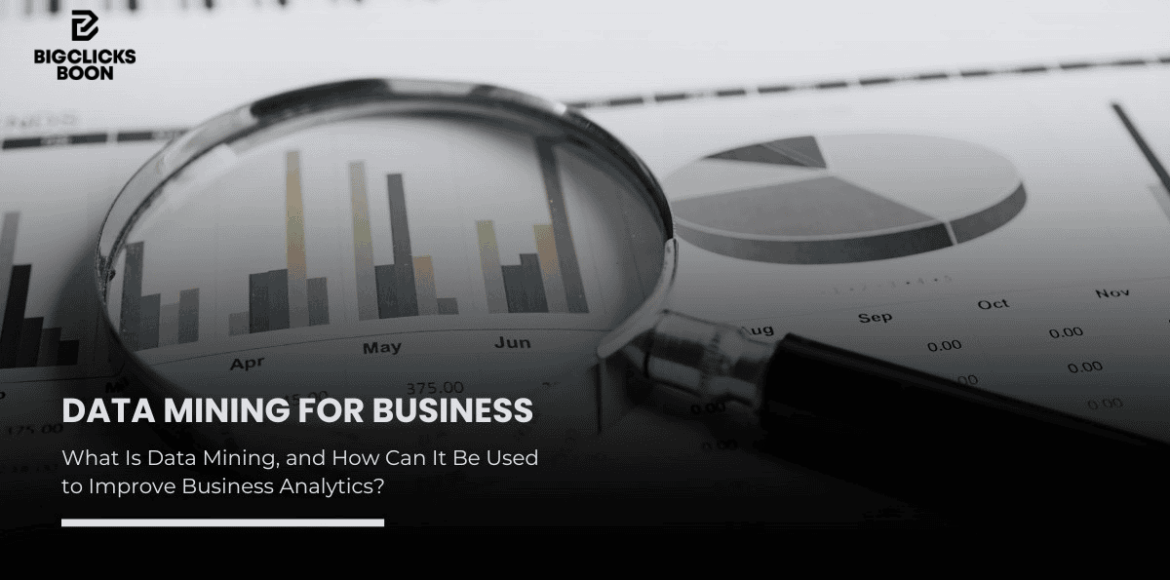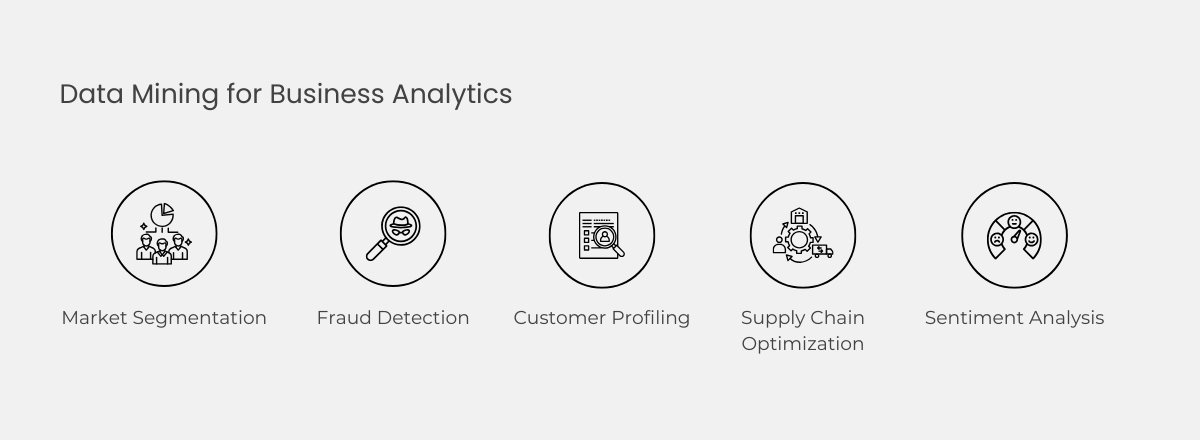Data Mining for Business: What Is Data Mining, and How Can It Be Used to Improve Business Analytics?

Introduction
In today’s data-driven economy, businesses must utilize every available resource to stay competitive. One of the most powerful tools at their disposal is data mining, a process that transforms raw data into meaningful insights. By applying advanced techniques, businesses can uncover hidden patterns, predict trends, and enhance decision-making. This article explores data mining for business analytics, its significance, techniques, real-world applications, and how organizations can implement it for success.
What is Data Mining for Business Analytics?
Data mining is the process of extracting valuable insights from large datasets using statistical and computational techniques. It enables businesses to identify patterns, correlations, and anomalies within their data to improve strategic decisions. Big data analytics and data mining for business work hand in hand to enhance operational efficiency, customer experience, and revenue growth.
Also Read: In Predictive Analytics, What Function Does AI Serve and Why Is It Critical?
Importance of Data Mining in Business Analytics
- Improved Decision-Making: Helps businesses make data-backed choices rather than relying on intuition.
- Customer Insights: Analyzes consumer behavior, preferences, and trends.
- Operational Efficiency: Streamlines processes, reduces costs, and enhances productivity.
- Risk Mitigation: Identifies potential threats like fraud, market volatility, or operational inefficiencies.
Popular Techniques and Tools for Data Mining
Common Data Mining Techniques
- Classification: Assigns categories to data based on learned patterns (e.g., spam detection in emails).
- Clustering: Groups similar data points together for segmentation (e.g., customer segmentation in marketing).
- Regression Analysis: Identifies relationships between variables to predict outcomes (e.g., sales forecasting).
- Association Rules: Discovers relationships between variables (e.g., “customers who buy X also buy Y”).
- Anomaly Detection: Identifies outliers that deviate from expected patterns (e.g., fraud detection in banking).
Key Tools and Technologies
- Programming Languages: Python, R, and SQL for statistical analysis and data manipulation.
- Big Data Technologies: Hadoop and Apache Spark for handling large-scale data.
- Machine Learning Frameworks: TensorFlow, Scikit-learn, and IBM Watson for advanced analytics.
Also Read: How Data Analytics is Revolutionizing Digital Marketing Key Insights for 2025
Data Mining for Business Analytics: Concepts, Techniques, and Applications
Businesses can utilize data mining for business analytics datasets to optimize different areas:
- Market Segmentation: Understand customer groups for targeted marketing campaigns.
- Fraud Detection: Identify suspicious transactions in finance and banking.
- Customer Profiling: Personalize customer experiences to increase retention.
- Supply Chain Optimization: Predict demand and prevent stock shortages.
- Sentiment Analysis: Monitor customer feedback on social media to improve services.
Real-World Applications of Data Mining in Business
- Retail: Amazon and Walmart use data mining to analyze buying patterns and optimize inventory.
- Healthcare: Hospitals predict disease outbreaks and improve patient care using data-driven insights.
- Finance: Banks detect fraudulent transactions and assess credit risk through predictive analytics.
- Manufacturing: Companies enhance product quality by identifying defects early.
- E-commerce: Netflix and Spotify recommend personalized content using user behavior analysis.
Also Read: Lead Generation for IT & Technology Companies: Get More Leads
Integrating Data Mining into Business Decision-Making
Steps to Implement Data Mining
- Define Business Goals: Identify specific problems data mining can solve.
- Collect Relevant Data: Gather high-quality, structured, and unstructured data.
- Choose the Right Tools & Techniques: Select appropriate machine learning models and tools.
- Analyze and Interpret Results: Convert findings into actionable insights.
- Implement and Monitor: Apply insights to decision-making and continuously refine models.
Challenges and Solutions
- Data Quality Issues: Ensure accurate, clean, and updated datasets.
- Integration with Existing Systems: Invest in scalable solutions like cloud-based analytics.
- Skilled Workforce: Train employees or partner with expert firms for seamless implementation.
Big Data Analytics and Data Mining for Business Success
The synergy between big data analytics and data mining for business is transforming industries. Big data provides vast information, while data mining extracts meaningful patterns. Together, they enable businesses to:
- Improve forecasting accuracy.
- Optimize marketing campaigns.
- Enhance customer service.
- Drive innovation through data-driven strategies.
Data Mining for Business Analytics Solutions: Why BigClicks Boon?
At BigClicks Boon, we specialize in data mining for business analytics solutions, helping businesses unlock their data’s full potential. Our services include:
- Custom Data Analytics Solutions: Tailored strategies for different industries.
- Advanced Machine Learning Models: AI-driven insights for better decision-making.
- Real-Time Data Processing: Cutting-edge technology for instant analytics.
We help businesses convert raw data into actionable intelligence, leading to growth, efficiency, and competitive advantage. Partner with us to leverage the power of data mining today!
Conclusion
Data mining is a game-changer for businesses looking to enhance analytics and decision-making. By utilizing the right techniques, tools, and strategies, companies can gain valuable insights that drive success. BigClicks Boon offers expert solutions to help businesses maximize their data potential. Get in touch today and transform your business with data-driven insights!


